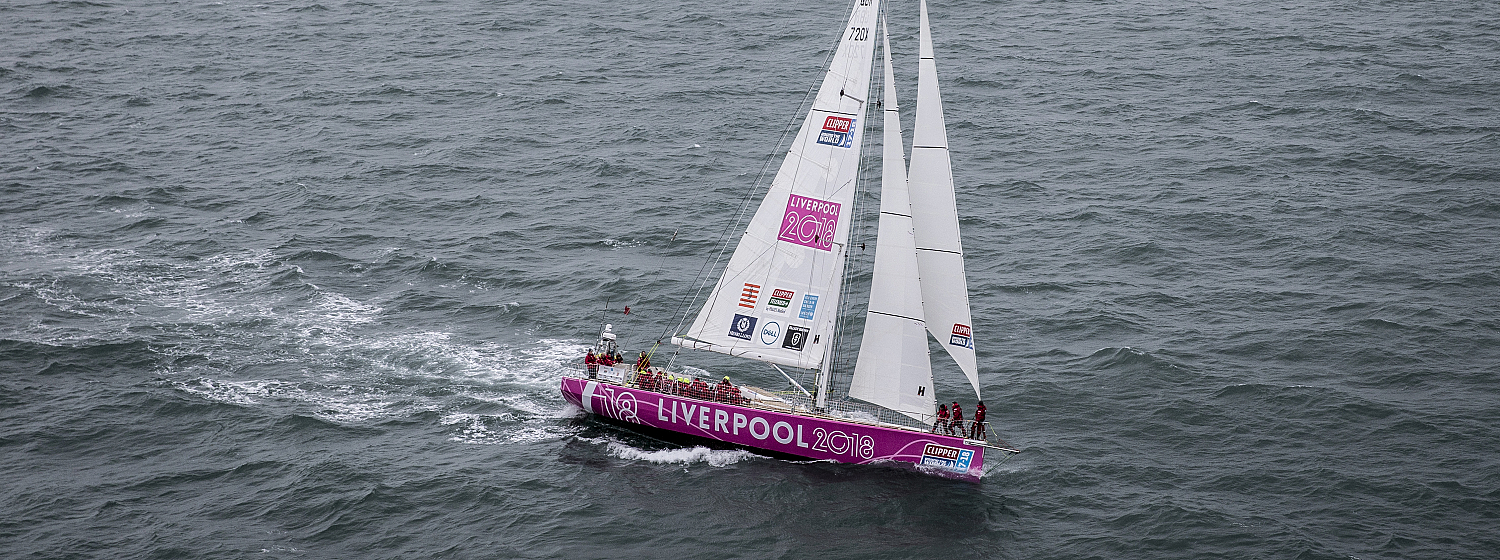Race 1 - Day 29
Crew Diary - Race 1 Day 29: Liverpool to Punta del Este
18 September
Back to Reports
View Team Page
Night Sailing
I remember the first time I saw the Southern Hemisphere stars...January 1999. Having just been transferred to Australia, I looked into the night sky and didn't recognise a single thing. It felt so distant, foreign, and almost alien. Over time, I learned a few of the constellations and things began to feel familiar.
So goes the feeling when we are sailing at night.
The absence of light pollution provides a night time canvas filled with stars and a huge swath of Milky Way brushed across the sky. Looking skyward from the boat, the Mainsail is framed with light and the top of the mast tri-color lights and wind-ex dance among the distant stars. It's awesome!
Familiar stars appear each night as we head south. Our new friends, as we stand at the helm and try and guide the boat in the correct direction. Do you place the star next to the mast? Or between the shroud and the spreader? Or out by the running backstay?
No matter what, a clear sky provides an enjoyable experience with the occasional shooting star or the less frequent satellite moving swiftly towards the horizon.
The most challenging part of night sailing comes when it's totally dark...cloudy and pitch black. No definition between sea and sky. It's really a strange feeling to stare into nothingness...yet you are helming a boat with 24 souls aboard in the middle of the Atlantic Ocean. What is out there? What's just in front of you? Behind you....?
Bam....what was that?! Another suicidal flying fish lands in the boat or bounces off your life jacket.
The Garmin instruments become your new friend. The Navigation Station below deck is set with alarms to signal nearby vessels, a radar can be engaged to see distant approaching squalls with alarms to signal their impending blast. On deck, scrolling displays provide True Wind Angle, Apparent Wind Angle, True and Apparent Wind Speed, Boat Speed, Speed Over Ground, Waypoint Target Compass Direction, Distance to Waypoint, etc. The red instrument light intensity can be adjusted to match your personal needs. The real Compass rocks with the sea in a red-lit globe just below the digital displays and your eyes dart from number to number as you feel the boat rudders move beneath your hands grasping the helm. Must be somewhat like helming a submarine.
You wait for any break in the darkness and especially the impending dawn to once again provide contrast between sea and sky. If it's really bad or if we are flying the kites, we will turn on the steaming lights. This bow facing beam will light the forward sails and at least give the helm a sense of what the sails are doing and how to adjust trim.
I'm still searching the night sky for the Southern Cross,...the night sky friend when I lived in Oz. It must be getting close as we've crossed the equator and are slipping down the latitudes. It will be good to see it again and trigger fond memories from the not too distant past.
Written By Mark Vantrease
Go Liverpool 2018!

